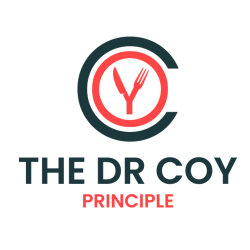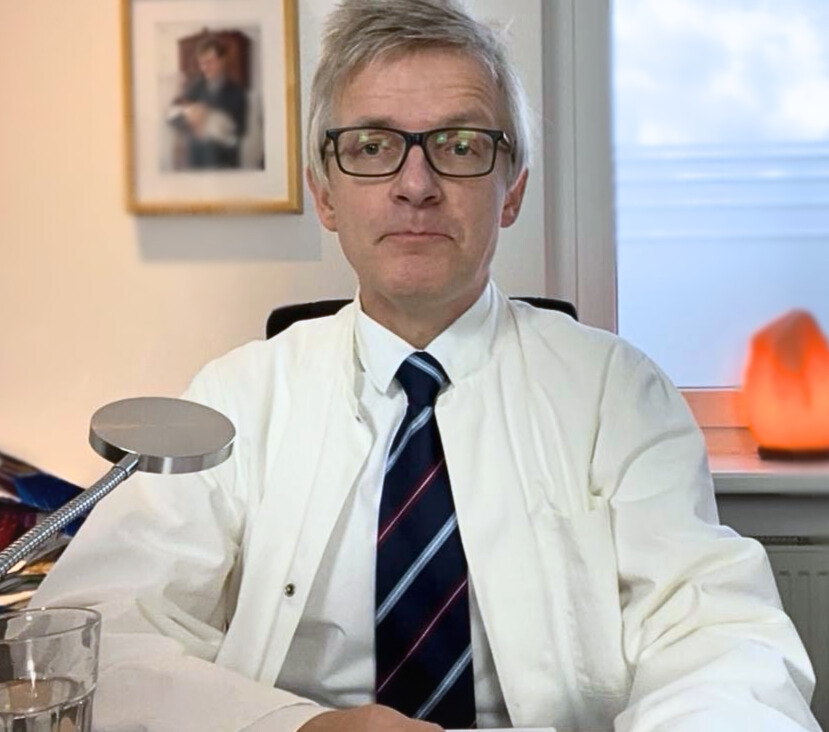Today, we are pleased to be joined by Dr. Joachim Stein, a highly respected specialist in gynecology and obstetrics, whose career spans over two decades of dedicated medical practice and research.
Dr. Stein studied human medicine at the Julius-Maximilians-University of Würzburg from 1990 to 1996 and completed his doctorate at the same institution in 1997. Following his approval by the Bavarian State Medical Association (BLÄK) in 1998, he gained clinical experience at several leading hospitals including Großhadern Hospital in Munich and Hanau City Hospital. He went on to specialize in gynecology and obstetrics, earning his board certifica-tion in 2004.
From 2005, Dr. Stein entered private practice, eventually taking over a joint practice in Bürgstadt and serving as an attending physician at Miltenberg Hospital. His growing interest in holistic and preventative care led him to further training as a preventive medicine specialist (dgf®) in 2008. Since 2010, he has been an integral part of EUSANA, where he has expanded his practice focus to include preventive medicine.
Dr. Stein has contributed to the scientific community through several notable publications, particularly in the fields of angiogenesis and immunological factors in recurrent miscarriages. His work includes studies on the cellular origin of pericytes and the effects of immunoglobulin therapies in reproductive medicine.
He is an active member of several professional organizations, including the Professional Association of Gynaecologists, the Bavarian Society for Obstetrics and Gynaecology, Hartmannbund, and the German Society for Nutritional Medicine and Prevention.
Dr. Stein brings to today’s conversation not only clinical expertise but also a forward-thinking approach to women’s health and preventive care.
How did you meet Dr. Coy?
I had read about his blood test already in 2009, when a specialist of preventative medicine recommended it to me. In November 2010, I met Dr. Coy personally during a conference on breast cancer that we both attended.
He was excited to hear that I not only knew about his test (back then only TKTL1), but that I also applied it in my office for therapy monitoring of cancer patients. We realised that we live quite close to each other in the central Rhein-Main region of Germany. Over the following years, we met regularly and became good friends
As soon as his current Pantum Detect Test, combining DNAseX/Apo10 and TKTL1, became available, we intensified our cooperation. I sought Dr. Coy’s additional advice, while he asked me to assist patients who had reached out to him for help.
Today, I am excited and very honoured to say that we are good friends who communicate regularly; especially since the new drug Benfo-oxythiamine is available.
What are your thoughts on the role of sugar for cancer patients?
Sugar plays a crucial role in many diseases prevalent in Western societies, particularly conventional table sugar (chemically known as saccharose). However, far from being “the bad guy,” sugar has always been an essential source of energy for the body, especially for the brain.
In ancient times, when our ancestors roamed the African savannah as hunter-gatherers, sugar was a rare and exceptional delicacy, only available in the form of ripe fruits and occasionally honey. Refined, processed foods rich in carbohydrates, such as starch and sugar, simply did not exist.
With the agricultural revolution, wheat and other cereals began to be cultivated, and the domestication of animals took place. Over time, this led to an increasing overload of carbohydrates in the human diet, which has had profound implications for modern health.
When Dr. Coy found the TKTL1 gene, he had discovered the key molecule for the well-known “Warburg Effect“, a hitherto unexplained phenomenon, that tumour cells were capable of using high amounts of sugar outside of the classical glycolysis, but through the pentose phosphate pathway.
I learned in medical school, back in the 1990s, that this metabolic pathway produces ribose and deoxyribose for DNA and RNA. It does! But another important role that Dr. Coy had discovered is the anaerobic fermentation of glucose to lactate, even in the presence of oxygen.
So, there is another source of energy production in the cell, besides the aerobic Citric Acid Cycle and Electron Transport Chain in the mitochondria and the classical anaerobic glycolysis, transforming pyruvate to lactate.
Consequently, high sugar consumption can be dangerous for cancer patients, whether they consume saccharose, glucose, fructose, or ribose—sugars that fuel cancer, enabling tumour cells to grow more aggressively, invade tissues, metastasize, and become resistant to chemotherapy, radiation, and other therapies.
Fortunately, the story doesn’t end there. Dr. Coy’s research has identified alternative sugars — including galactose, tagatose, isomaltulose, trehalose, allulose, and others — which I refer to as ‘intelligent sugars’ for several compelling reasons.
First, they supply the cells with reliable energy, without causing an insulin spike like conventional sugar. Second, they don’t damage teeth. Third, galactose gives an energy supply for brain cells independent from the glucose transporter. Fourth, tagatose has prebiotic effects, thus protecting and supporting a healthy gut microbiome.
Above all, you don’t have to give up the sweet taste and energy just because you’re battling cancer!
What’s even better is that some sugars, such as galactose, tagatose, and mannose, have shown remarkable anti-tumour effects. They slow down growth and inhibit the TKTL1 pathway, which doesn’t function in the presence of these sugars.
How important is a holistic approach when treating cancer patients?
In my opinion, the importance of an integrative approach cannot be overemphasized. It should include both conventional oncology and new, holistic treatments. Unfortunately, though, many oncologists rely exclusively on classical oncology therapies like surgery, chemotherapy, radiation and immunological therapies that developed at a breathtaking pace in recent years.
All these approaches target molecules of communication, either within the cell or among cells, in more and more sophisticated ways: Monoclonal antibodies, immune checkpoint inhibitors, angiogenesis inhibitors, tyrosine kinase inhibitors, antibody drug conjugates that target chemotherapy to tumour cells specifically to minimise side effects, to name just a few examples.
The problem with all these approaches, according to my experience from being a gynaecologist and practicing physician for 28 years (board certified) is the following:
They have multiple, partially severe side effects (bone marrow suppression, infection, nausea, vomiting, hair loss, induction of secondary malignant diseases like leukaemia or lymphoma. They tend to lose effectiveness over time, as tumour cells may become resistant. I call the classical oncology approach in a figurative sense „the military approach“- it is basically a fight of “our“ troops versus the “enemy“ troops. Of course, cancer in this context is the “enemy “, which to some extent is undoubtedly true!
Not that this fight is unnecessary, far from it!
But: There is help to minimise collateral damage on the body, as the vast majority of cells are still healthy! They need our support to survive – and killing proliferating cancer cells is not enough. There will always be tumour stem cells that remain in the body. Either the immune system is capable of keeping them under control, or a relapse will occur.
This is where a holistic approach comes into play: inhibit invasive growth through target nutrition (The Dr Coy’s Principle) and Benfo-oxythiamine (if available). Support the body with a healthy diet, exercise, relaxation and meditation techniques, psychological support. Make classical therapies much more effective if TKTL1 is inhibited.
How have you and your patients benefited from the Dr. Coy philosophy?
I am convinced it saved several lives! Especially since Benfo-oxathiamine is available, several patients with metastasized cancer (predominantly breast, but also prostate) are doing surprisingly well and survived much longer than conventional oncology had predicted. I am able to give additional hope to people (although I tell each and every one of them that with cancer, there is never a guarantee for recovery!).
What are current treatment plans for cancer patients lacking?
Again, this is my personal view. Cancer treatments tend to focus too much on the acute phase—eliminating the clinically manifest tumour. But once the tumour is gone and the patient is discharged, they’re often left to navigate their recovery alone, grappling with anxiety and uncertainty.
When patients ask the fundamental question, “What can I do to prevent the tumour from coming back?” many oncologists tell them they can eat and live as they did before, using the standard argument that “there are no studies” to support the impact of nutrition, supplements, or lifestyle changes. But this blanket statement isn’t entirely accurate.
I sometimes say—ironically—that some oncologists have a “controlled trial fetish.” Of course, randomized controlled trials are an invaluable scientific tool. Thanks to them, we know that mastectomy in breast cancer doesn’t improve overall survival, allowing around 90% of breast cancer patients today to opt for a lumpectomy instead. But for a patient facing cancer, there isn’t always time to wait three to five years for a study to confirm the effectiveness of a promising therapy. By then, they might not be alive to benefit from it. If experimental data, cell cultures, and individual case reports suggest that something could help—and if a substance like BOT has been shown to be safe and well tolerated—why not try it? If I had cancer, I certainly would.
Once chemotherapy, radiation, and additional therapies are completed, a patient is considered “cured” if they remain tumour-free for five years. But beyond routine check-ups, they receive little real support.
In their book After Cancer Care, American oncologists Gerald Lemole, Pallav Mehta, and Dwight McKee point out that heart attack survivors are automatically referred to cardiac rehabilitation, where they’re guided through lifestyle changes, exercise, and stress reduction in a much more structured way than cancer patients ever are. And most importantly, to conclude this overview, I’d like to quote the preface of their book:
“No cancer is 100% fatal. Regardless of how aggressive the tumour or how poor the prognosis, there are always survivors.”
This is what patients want—and need—to hear. And, dear oncologists, please never tell someone, “You have X months to live,” or worse, “In X months, you’ll be dead if you don’t do Y therapy.” Every case of cancer is unique. We’ve all seen patients we thought would survive but didn’t, as well as those we thought had no chance—who miraculously pulled through.
We are here to treat and support human beings. Their bodies heal themselves. Or as the Latin saying goes: “Medicus curat, natura sanat.”


